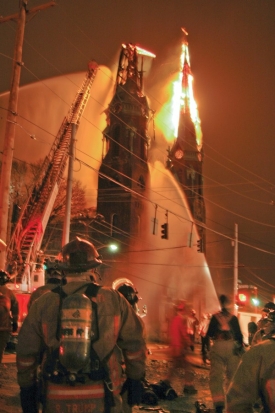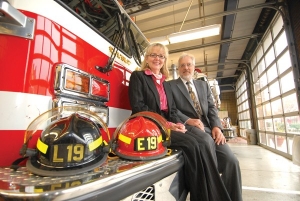by John Bach
After hours of battling a three-alarm blaze, an engine full of soot-covered firefighters heads back to the station. Upon arrival, the men and women shed their gear and fall into their bunks to catch some sleep -- thankful everyone escaped harm.
Or did they?
Environmental health researchers at the University of Cincinnati have shown that the hot zone for firefighters may well extend far beyond the flames. In fact, their research indicates that the place where most firefighters feel the safest -- the firehouse -- may actually pose a serious long-term health risk for certain types of cancer.
University of Cincinnati environmental health researchers Grace LeMasters and James Lockey, working in conjunction with Ash Genaidy, a researcher from the UC College of Engineering, looked at studies covering 110,000 firefighters and several decades. They found that rates for testicular cancer in firefighters are 100 percent higher than the general population. Their work also reveals that those in uniform are 50 percent more likely to fall ill with non-Hodgkin's lymphoma and multiple myeloma. The risk to firemen for prostate cancer increases by 28 percent.
LeMasters says firefighters are trained to wear the appropriate gear to protect from being burned or inhaling dangerous smoke while inside a burning building. But they are still susceptible to a dangerous "soup of exposures" even after the emergency is over -- while standing outside a fire and inhaling smoke or even while inside the station if diesel fumes aren't properly ventilated.
Of particular concern is the soot that firefighters carry back with them on their faces, hands and under their gear. LeMasters says soot is a group-one carcinogen, a top cancer-causing agent, that gets sucked into the body through the skin, particularly when firefighters sweat and their pores open.
"We are concerned that though firefighters may have respiratory protection, they really aren't getting adequate protection from absorption of these compounds through their skin," says LeMasters. "A lot of firefighters have told me that they come back from fires covered in soot. Often times they are too tired to shower. They will just fall into their beds and go to sleep."
She says many firefighters have only one set of gear. And when they respond to a second alarm before their protective clothing is washed, they are slipping back into contaminated clothes.

 Issue Archive
Issue Archive
